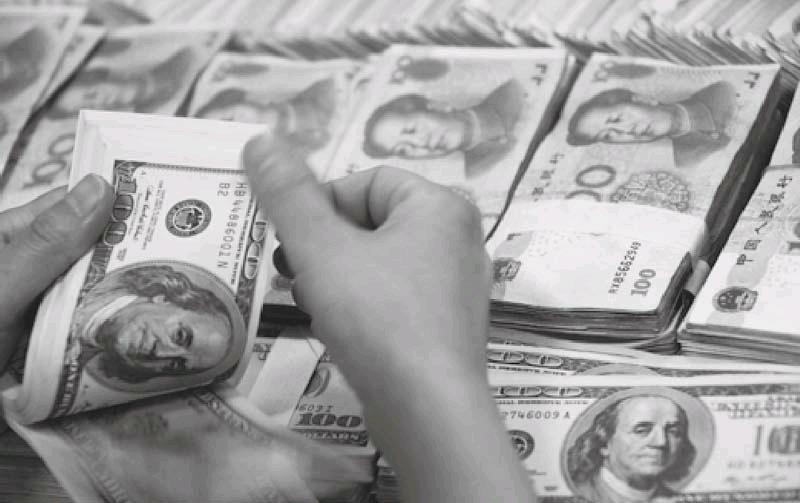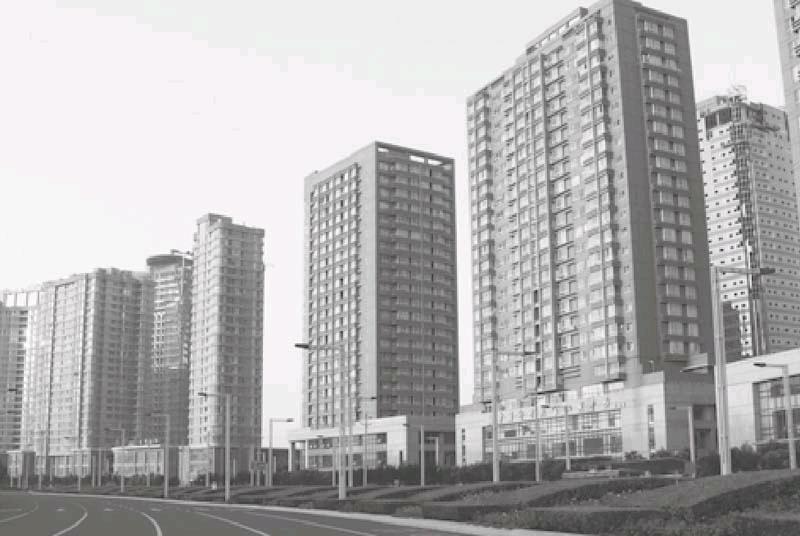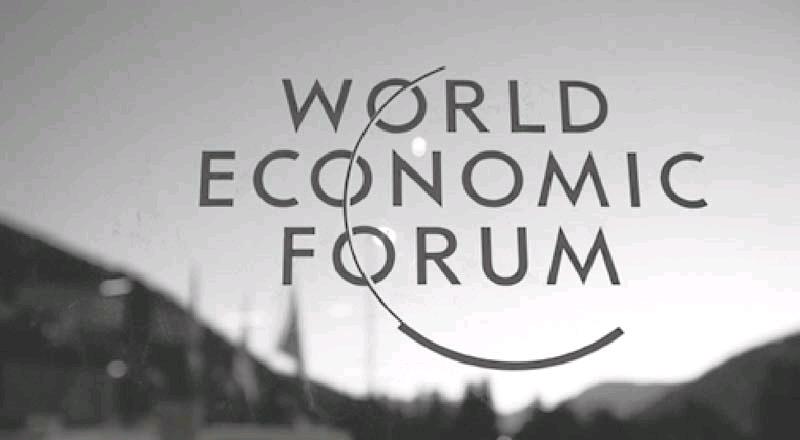Economic Slowdown in China
2016-01-12
Hits Small Manufacturers Par-ticularly Hard
Chinas gross domestic product (GDP) grew slightly less strongly in 2014 than originally calculated, fuelling concerns that the worlds second largest economy might be headed for a period of slower expansion.
Growth in Chinas investment and factory output in August has come in below forecasts, in a further indication that the worlds second-largest economy is losing steam.
Factory output grew by 6.1% from the year before - below forecasts of 6.4%.
Growth in fixed-asset investment - largely property -slowed to 10.9% for the year-to-date, a 15-year low.
Growing evidence that the worlds economic powerhouse is slowing down has caused major investment market falls.
Other indications that the economy is weakening can be seen in falling car sales and lower imports and inflation.
Chinese manufacturers cut prices at their fastest pace in six years, largely on the back of a drop in commodity prices, which have dropped sharply over the past year as demand from China faltered.
The economic slowdown in China has hit small manufacturers particularly hard. Factory output has declined to its lowest level since 2009 this year.
Exports have slumped too.
Being Felt Across the Globe
The current slowdown in China is being felt across the globe — it is, after all, the second largest economy in the world, and what happens here is being felt elsewhere.
So as the great and good of the global business community gather in Dalian in September for the World Economic Forum, at the top of their minds will be how China plans to manage this economic transition.
The forum describes itself as “the international institution for public-private co-operation to shape the global, regional, national and industry agendas”.
It was set up in 1971 by Prof Klaus Schwab as a not-forprofit foundation.
It holds an annual meeting in January at the Swiss ski resort of Davos, which is essentially a talking shop for business and political leaders to discuss possible solutions to global problems, though it is increasingly attended by celebrities, activists, academics and think tanks too.
Since 2007, it has also put on the Annual Meeting of the New Champions (sometimes called the Summer Davos) in China, alternating between Dalian and Tianjin.
Experts warn that China could plunge rest of world back into recession as its economy slows,
A report by investment banking giant Citigroup warned there is now a 55 per cent chance of another global slump in the coming years.
“The world appears to be at material and rising risk of entering a recession led by emerging markets and in particular China,” said Willem Buiter, a former Bank of England official and now chief economist at Citigroup.
The warning came after a surge in shares in Asia and Europe led by the best performance on the Japanese stock market since the financial crisis.
The Nikkei 225, the main benchmark in Tokyo, jumped 7.7 per cent in its biggest one-day gain since October 2008.
The Hang Seng was up 4.1 per cent in Hong Kong and the Shanghai Composite index was up 2.3 per cent as investors cheered the promise of fresh measures to boost growth.
Asias rally was echoed in Europe where the FTSE 100 index closed 82.91 points higher at 6229.01 in London. Madrid was up 1.7 per cent and Paris 1.4 per cent.
But Milan was only 0.8 per cent higher and Frankfurt added just 0.3 per cent. It marked a disappointing finish in Europe as bourses across the Continent gave up some of their earlier gains.
China leading world towards global economic recession, warns Citi
A brutal slowdown across emerging markets will hurl the global economy into a fresh recession.
A “hard landing” for the Chinese economy will likely lead the world into a recession in the next year, Citis global economics team has warned.
Analysts at the Wall Street bank believe that a slowdown concentrated in emerging markets will drag down demand and see economic activity fall well below its potential across the world.
They anticipate the global economy to slide into recessionary territory during next year, and remain there for most of 2017. The chance of such a global recession now stands at 55pc, staff estimated.
Citi assigned a 15pc probability to the risk of a “severe recession”, in which the global economy enters a boom, overheats, and subsequently falters in dramatic fashion.
Willem Buiter, global chief economist at Citi and a former Bank of England rate setter, said “that there is a high and rising likelihood of a Chinese, emerging market and global recession playing out”.
The warning signs that foreshadow a recession in the worlds second largest economy are already evident. Recent epi- sodes of “irrational exuberance” in Chinas property and stock markets are “the classical recipe for a recession in capitalist market economies”.
Citi estimated that China is now growing at just 4pc, well below the numbers issued by its government statisticians, and the countrys official 7pc growth target. Other large economies- Brazil, Russia, and South Africa - are already in trouble.
Should growth in China slow further still, Mr Buiter said that “many other emerging markets, already weakened, will follow, driven in part by the effects of Chinas downturn for their exports and, for the commodity exporters, on commodity prices”.
Mr Buiter said that Chinas policy response had been “underwhelming”. It is “not a command economy but like most real-world economies today, it is a messy market economy of the crony-capitalist variety”, he claimed.
Citi predicted that Beijings leaders will be unwilling to take more radical steps to shore up growth, stopping short of a more dramatic devaluation of the yuan. Li Keqiang, the countrys premier, said that China would not start a currency war.
Signs of global weakness have also been reflected in corpo-rate earnings, growth and inflation rates, and trade figures - all suggestive of insufficient levels of demand. “Economists seldom call recessions, downturn, recoveries or periods of boom, unless they are staring them in the face,” Mr Buiter said. “We believe this may be one of those times.”
We dont wish to boost our exports by devaluing the Chinese currency, still less do we want to see a currency war.
While the recession envisaged by Citis economists is one of only moderate depth and length, it would come at a difficult time for the worlds policymakers. Across many countries monetary policy is considered to be tapped out, with central bank interest rates close to - or even below - zero.
Ghost town
China managed to borrow and spend its way out of the last crisis, building massive property developments across the country, pushing workers from the factory floors into construction projects.
But now even that pillar of the Chinese economy is suffering.
Reporters drove into the Changxing Island township - just 50 miles (80km) out of Dalian - a satellite city built on the expectation of future growth.
But all they found were miles and miles of brand new, but empty buildings.
An eerie, end-of-the-world feeling descends upon you as you walk around the town.
Freshly painted pedestrian crossings and traffic lights line the pavements but there is barely anyone on the streets.
One block of flats is aptly called Fairyland, a name its developer would never have dreamed could have the negative connotations it now does.
Tens of thousands of flats here lie uninhabited, part of the estimated 70 million unsold homes that have been built across the country, for a middle-class population that never showed up.
The Chinese government says this is all part of the plan to move from an export-led economy to a modern one based on services.
It is textbook economics and part of the often painful cycle maturing economies need to go through.
Job Prospects
Zoey Ye is 21 years old. Fresh-faced and an English and American literature enthusiast, she is nervous about her job prospects because of the slowdown.
“I think the economy has become a little slow, so companies dont hire new people,” she told me as we walked around her university lake.
“But I am educated, and I want to make money so my children can have everything they want.”
You just have to take a look around Zoeys university to see the challenge that China faces as its economy changes.
An estimated eight million Chinese graduates enter the workforce every year and, like Zoey, they all have rising expectations about their future.
The Real Worry Is Debt
Slow growth in the Chinese economy will put pressure on local governments ability to repay their debts.
In the past few months, a series of developments in the Chinese economy have rattled global investors, and sent ripples of shockwaves across markets throughout the world.
The “forget-about-Greece-China-is-the-real-threat” rhetoric has therefore spread quickly among the Western media.“Whatever you might think about the Chinese economy, its worse,” said Jim Chanos, a well-known short seller and a longtime China bear, in a CNBC interview.
As growth continues to slow down in the worlds secondlargest economy, China is at the crossroads: it has to prop up the economy the old-fashioned way and also push forward structural reforms to lead the country onto another growth trajectory. In this context, some policy changes can be interpreted drastically differently by observers, and many may be confused about the true intentions of those policy moves.
One example is the debate over the central banks (People Bank of China , or PBOC) recent decision to reform the midpoint determination mechanism of the RMB exchange rate, which resulted in the sharpest drop of the currencys value in almost two decades. Critics believe that the PBOC intentionally devalued the RMB to boost anemic exports; others argue that while the timing is not convenient, the central bank needs to use the window (when conservatives may agree to the reform for the sake of supporting growth) to push forward its agenda.
To make sense of where the Chinese economy is and the implications of the central governments policy moves, we speak with Li Wei, Professor of Economics at Cheung Kong Graduate School of Business, to get his views on some of these hot button issues.
After adjusting the RMB parity rate mechanism on August 11th, the PBOC on August 25th announced that it would cut both the interest rate and the required reserve ratio for commercial banks. Bank officials insist that the moves do not mean a change of direction in Chinas prudent monetary policies; instead, the central bank is just reacting to changes in money supply and other market conditions.
Li Wei agrees that the rate cuts are a means to compensate for the fall of money supply due to the capital outflow from China. Capital outflow has rapidly increased in recent months, and therefore Chinas money supply increase is slowing down, short of the target rate so far in the first half of the year.
But on the other hand, lower interest rates may drive more capital to leave China, pressing down on the RMB exchange rate along the way. And thats why the PBOC has been selling US dollars to prevent the RMB exchange rate from dropping too far. “When we move more towards a floating exchange rate, there are going to be contradictions,” Li says. “This is a trying time for the central bank.”
Although short-term volatility may send the RMB even lower, Li Wei believes that the Chinese currency will strengthen over the longer-term as the economy continues to gain productivity. Li says that while China still records a significant trade surplus, it makes sense for China to eventually move from a net exporter to a net importer in the process of transforming the economy to be more consumption-driven.
The other determining factor of the RMB exchange rate is the US dollars performance in the near future, Li says. If the Federal Reserve did raise interest rates later this year, the RMB will depreciate more against the US dollar. But at the same time,the RMB may appreciate against a basket of other currencies, as many central banks are engaging in aggressive monetary easing around the globe.
Chinese shares have fallen about 38% since the peak in mid-June, despite the governments efforts to support the indices by directly buying into the stock market a little short of two months ago.
Li Wei says the interventions, including halting IPOs after it announced to reform its rigid approval system, come with high costs. “None of the interventions are completely benign,”Li says. “When the government pushed the Shanghai Composite back to around 4,000 points, it looked like they had won, but they didnt—the index fell even lower.”
The lesson here is that the government should only go in when the market has fallen to a level that presents the fundamental value of those shares. But the paradox is that if theres a consensus on the fundamental value, then the market will correct itself without the help of the government. “Thats what the market mechanism is really all about—you should allow it to play its role,” Li says.
A slew of economic indicators have shown that the Chinese economy is facing more downward pressure, including CKGSBs Business Conditions Index (BCI). The BCI registered 52.1 in August, a slightly pick-up from Julys 51.6, but still far from Mays 61.3.
“Given the current situation, we think its very likely that China will have a growth rate below 7%,” Li says. “Some people may get alarmed. But in general, I think 6% is good, even 5% is okay. We are just so used to high growth rate but we cant grow like that forever. ”
While Li believes that slower growth is not as nerve-wracking as many suggest, the debt risk shouldnt be overlooked. Li says as growth slows, local governments and their financing vehicles, which borrowed aggressively in previous stimulus cycles, will face more pressure to repay their debts. He points to Chinas flat industrial value-added tax growth in the first seven months of the year and that the land auction revenue has declined more than 25% for local governments.
Even though Beijing has rolled out plans for local municipalities to swap their debt into longer-term bonds, not every region has the creditworthiness to borrow from the bond market cheaply, according to Li. “My concern is not that the growth rate is slowing; Im worried about what happens next.”
A Big Opportunity for U.S
Chinas slowdown could end up being good news for U.S.
Economists say it would keep a lid on consumer prices and possibly give a boost to U.S. service industry exporters
Chinas economic slowdown and Beijings fumbling policy response have battered U.S. markets recently. But a slowergrowing China, over the long haul, could be a plus for the U.S. in several ways.
On the economic side, a China slowdown would keep a lid on consumer prices as weak demand in China would depress the price of commodities such as copper, oil and steel used in cars, electronics and other consumer favorites, economists say.
And if China presses hard to remake its economy to focus on its service industry, as Chinese reformers have long urged, that would give a boost to U.S. companies, like software and entertainment firms if China gives them space to operate, and would cut overproduction in Chinas industrial sectors.
Another plus: big Chinese firms, say economists, would be likely to invest more in the U.S. as returns on investment shrink in China and expand in the U.S. Similarly, some of Chinas brightest talent, who are already educated in the U.S., might choose to stay abroad rather than return home if economic prospects in China fade.
On the geopolitical stage, slower growth would put off for decades the time when China could boast it was the worlds largest economy, a threshold some estimate it may cross by 2030. That would weaken Chinas claims to global leadership and undermine the “China model” of development, where the state plays a big role directing the economy. In contrast, U.S. arguments that growth depends on entrepreneurial innovation, freedom of thought, and minimal government constraints would be bolstered.
“Chinas economic struggles are likely to subtly shift the balance of power in both bilateral and multilateral negotiations in favor of the U.S., whose economic recovery continues to gather momentum,” said Eswar Prasad, a Cornell economist who was a senior China official at the International Monetary Fund. “The U.S. will go into meetings of the G-20 and international institutions with a stronger hand relative to China.”
For many countries, strong Chinese growth is critical. They include Chinas neighbors in Asia, which depend on China trade, and commodity producers in Latin America and Africa. Moodys Analytics calculates that every 1 percentage point fall in Chinese GDP growth reduces global gross domestic product by 0.5 percentage point. (The global number also includes China, which makes the result seem more dramatic.)
But the U.S. isnt all that closely tied to China. U.S. exports to China are about 1% of U.S. GDP, and Chinese direct investment in the U.S. is just a fraction of a percent of total foreign investment.
“If China disappeared from the map,” said Paul Ashworth, an economist for Capital Economics, U.S. GDP growth would fall by about 1 percentage point. “Thats not even a recession.”
Potential gains for the U.S. from a China slowdown have become fodder for some finger-pointing in Beijing. Yao Yudong, a researcher at Chinas central bank, blamed the Federal Reserves plans to raise U.S. interest rates—not Chinas economic problems—for the global market turmoil.
How large a gain the U.S. would reap depends heavily on how China responds to its problems.
A significant shift toward a consumer-based economy would require China to reduce barriers that keep migrants from living in cities, strengthen the countrys weak social safety net so consumers dont feel they need to save so much and sharply reduce state control of banks, among other big changes that are opposed by powerful local governments and state-owned firms.
Those changes would produce a big opportunity for U.S. banks, insurance companies, health-care firms, Internet and entertainment companies to do more business in China, specialists said. The changes would also de-emphasize old-line industries, such as steel and tires, that are burdened by overcapacity and export their excesses—prompting big trade fights around the world. Many of those money-losing companies would go out of business if Chinese banks made loans based on profitability, rather than government direction.
But even if China were to ignore reform, look to its old playbook and try to boost exports once again, the U.S. is unlikely to be hurt much. As the worlds largest exporter, said University of California at San Diego economist Gordon Hanson, China doesnt have much room to expand exports, and the U.S. has already absorbed the bulk of the shock from the China export juggernaut.
Measures to Boost Growth
In September, the Chinese Premier, Li Keqiang, said China remained on track to meet all its economic targets for this year despite the economic data.
China has already cut interest rates five times since November to encourage lending and spur economic activity, along with other measures to boost growth.
Premier Li pledged that China would take more steps to boost domestic demand and that it would implement more policies designed to lift imports.
China recently revised down its 2014 growth figures from 7.4% to 7.3% - its weakest showing in nearly 25 years.
For this year, the government is targeting annual economic growth of about 7%.
Meanwhile, the Chinese authorities said they would take new steps towards a more market-based economic system by offering shares in state-owned businesses to private investors.
The move, which they said would help improve corporate governance and asset management, is planned to take place before 2020.
Chinas industrial economy is dominated by 111 conglomerates which are state owned.
